Examining Leveraged Yield Farming in 2024: Key Insights and Recommendations
In Brief
In this article, we delve into leveraged yield farming (LYF), a dynamic investment tactic within decentralized finance (DeFi) that provides investors with the potential for higher passive returns while enjoying lower annual percentage rates (APRs) compared to traditional finance (TradFi).
The DeFi landscape opens up numerous opportunities for investors to earn passive income, with APRs often outperforming those in the traditional finance realm. Ranging from low-risk token staking to more adventurous liquidity mining and high-yield leveraged approaches, there's something available for every investor looking for a suitable risk-reward balance.
In this piece, we will investigate the fundamentals of leveraged yield farming (LYF) – an investment method that amplifies earnings within the DeFi space.
Liquidity Mining Explained
To fully appreciate what leveraged farming entails, it's essential first to understand the concept of DeFi yield farming, which includes practices like liquidity mining.
For a decentralized exchange (DEX) to function efficiently, tokens need to accumulate in liquidity pools (for instance, UniSwap’s pools). These tokens are contributed by DeFi participants, known as liquidity providers, who earn passive returns based on their deposits, which typically originate from trading fees, bonus tokens from the DEX, and loyalty rewards. USDC/ETH pool This encapsulates the essence of liquidity mining – enhancing DeFi liquidity in exchange for earning passive income.
Nevertheless, as with any strategy in the DeFi sphere, liquidity mining carries its own set of risks. One significant concern is impermanent loss (IL), which can occur during times of market volatility. To mitigate exposure to IL, liquidity providers (LPs) need to stay informed about market trends and adjust their holdings accordingly.
It's clear that the more tokens you contribute to liquidity pools, the greater the potential rewards you can reap. LYF protocols give you the power to utilize more liquidity for your farming activities than you might already possess!
What is Leveraged Yield Farming?
In essence, these protocols enable you to borrow additional funds, deploy them for farming yields, and ultimately enjoy enhanced returns.
Of course, it’s worth noting that lenders don’t just offer liquidity out of goodwill; they too aim to earn a profit. Borrowers must contend with borrowing costs that, while generally high in the realm of LYF, can lead to greater yields due to optimized capital use.
A noteworthy characteristic of LYF protocols is the ability for farmers to borrow beyond the value of their collateral deposits. You might wonder how this is safe for lenders – the answer lies in the design of the system. Unlike conventional crypto lending frameworks, the leveraged assets remain on the platform. Farmers leverage DEXs integrated within these platforms for yield farming, ensuring asset safety for lenders.
How Is Leveraged Yield Farming Executed?
The LYF model necessitates the involvement of two distinct groups: lenders and borrowers (or farmers). Lenders contribute assets to lending pools, while borrowers take out loans to pursue yield farming.
In order to participate in leveraged farming, users are required to lock up some assets as collateral while potentially borrowing up to ten times that amount (depending on the specific protocol and pool). This leverage can subsequently be employed to establish a position on any compatible yield farming platform.
Upon opening a position, the LYF protocol will utilize one of its partner DEXs to convert tokens and add them to a liquidity mining pool, potentially staking the generated LP tokens to enhance the APR. These processes occur seamlessly and require the farmer to only manage their LYF position and occasionally claim their rewards.
Through LYF, participants have the chance to farm with more assets than they actually possess, which maximizes capital efficiency and can lead to significantly elevated returns on investment—albeit with added risks that we shall discuss shortly.
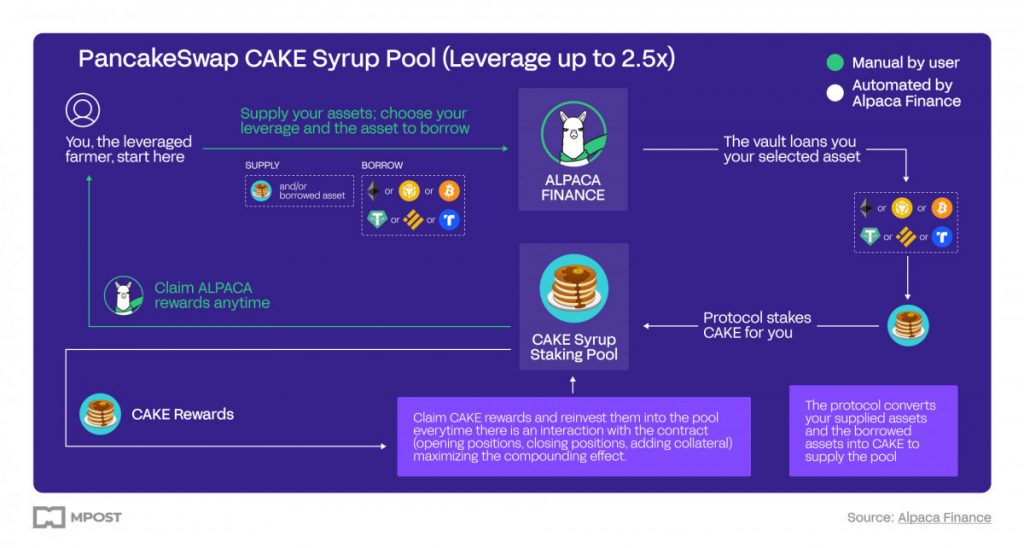
Similarly, leverage lenders stand to gain higher returns compared to traditional lending platforms. These protocols typically employ algorithms that adjust loan interest rates based on higher utilization ratios (the relation of lent assets to the total amount in the lending pool), and in LYF, users can leverage greater sums than they deposit as collateral (which are termed undercollateralized loans), thereby enhancing utilization rates and lending returns.
Risks Associated with Undercollateralized Loans
While the elevated returns of LYF present attractive prospects, they also introduce heightened risks. As with any lending platform, borrowers risk facing liquidations.
This situation arises when the debt ratio (collateral relative to leverage value) declines to a level where borrowers lack sufficient assets to satisfy their loan obligations. In leveraged scenarios, this debt ratio is particularly vulnerable to market fluctuations. Borrowers in leveraged positions need to strategically navigate their tactics and rigorously monitor their debt status to lessen the likelihood of losses.
To lower the risk of liquidation, consider the following measures:
Regularly monitor your debt ratio or health factor. If it nears threshold limits specific to the protocol or pool, consider adding collateral or repaying part of your owed amount;
- Conduct thorough research, track market trends, and maintain a safety margin on your investment;
- Opt for lower leverage levels. Utilizing maximum leverage corresponds with heightened risks;
- Utilize and farm stablecoins. While stablecoins generally yield lower APRs, they provide a safer buffer against potential liquidations.
- Leading 4 Platforms for Leveraged Yield Farming
Different protocols are designed to offer their users various ways to implement LYF, integrating diverse strategies and safety mechanisms. Let's take a look at established platforms that you could explore to embark on leveraged farming.
Farmers can leverage these tokens against stablecoin or LSTETH collateral to generate yields in a range of vetted vaults from ecosystem partners. Juice users can not only earn by providing liquidity to DeFi but can also utilize WETH leverage to yield farm on restaking platforms like
Juice Finance
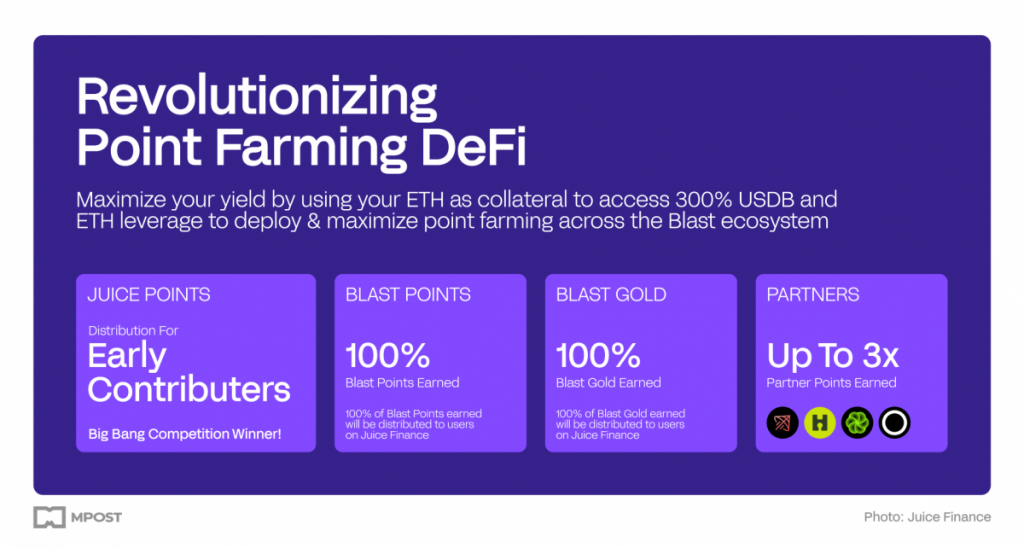
Built within the Blast ecosystem, it’s a leveraged yield farming platform with approx. $530M TVL accepting $USDB and $WETH deposits and providing lenders with 15% APR, depending on the supplied asset.
By optimizing points and yield farming, Juice Finance offers substantial returns for borrowers, which have been noted to range from 20% to 35% as of this writing. EtherFi , Kelp , and Renzo , among others.
In the burgeoning ecosystem, Gearbox has amassed over $350 million in total value locked (TVL) since its inception in late 2023.

Gearbox Protocol
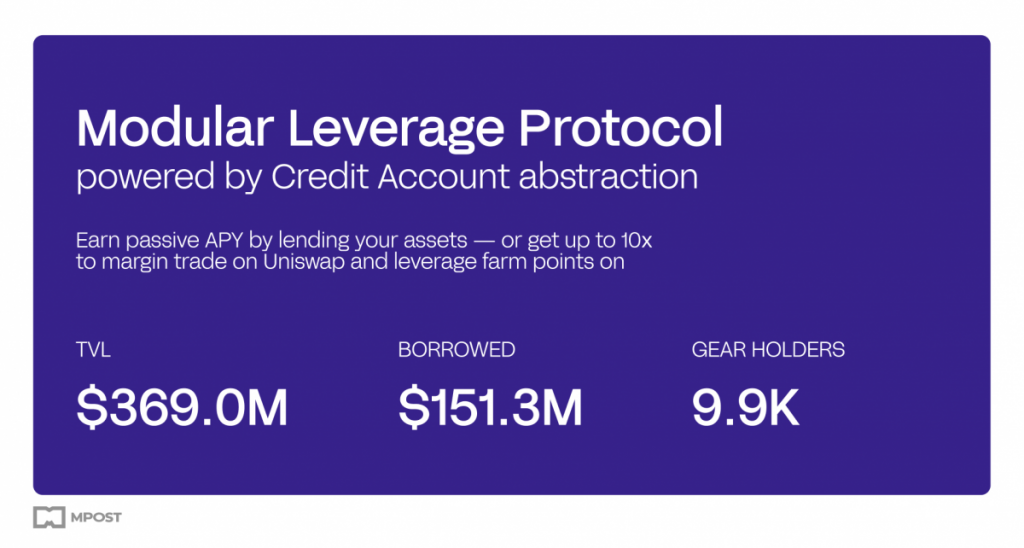
uk uz , uz vi vi With Gearbox, users can borrow assets to engage in leveraged farming, staking, and restaking activities. The model is straightforward – deposit collateral and leverage up to tenfold to yield farm across protocols such as
By providing an extensive array of one-click strategies alongside gauge voting enhancements, Gearbox can achieve impressive yields for LYF (ATTOW, with some pools on Convex reaching as high as 88% APR). Search , Search , Hack Seasons Airdrops Calendar
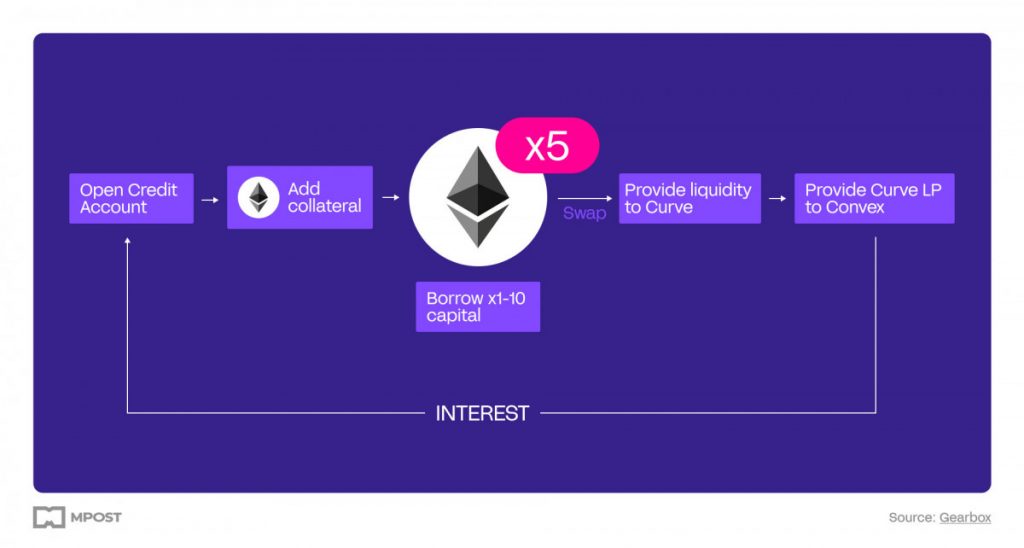
Francium, constructed as a decentralized yield strategy aggregator on , delivers various smart trading techniques, allowing for leveraged yield farming of up to three times.
Hot Projects

With the introduction of auto-rebalancing vaults, Francium offers user-friendly one-click strategies that minimize impermanent loss and liquidation risks, presenting lenders and farmers with APRs of up to 10% and 40%, respectively. Metaverse Post With a built-in yield farming calculator, users can effortlessly visualize and compare potential earnings across both standard and leveraged farming, aiding them in making informed strategic decisions based on anticipated market trends.
, providing access to a range of offerings such as lending, LYF, automated vaults, perpetual futures trading, and Alpie NFTs with multiple applications.
However, Alpaca's leveraged yield farming serves as the primary offering, enabling users to leverage up to three times (or 4.5 times when staking Alpie NFTs) for farming on
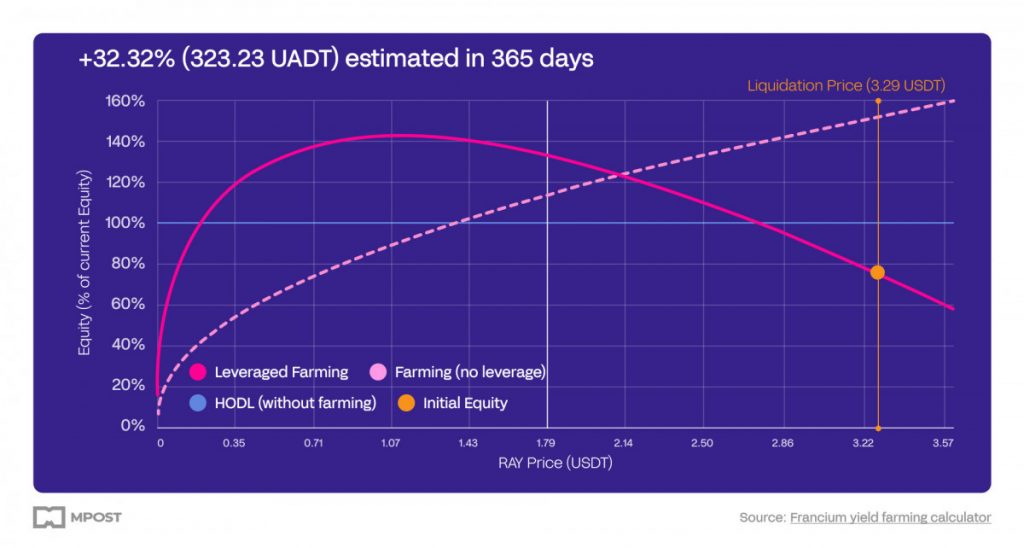
Featured
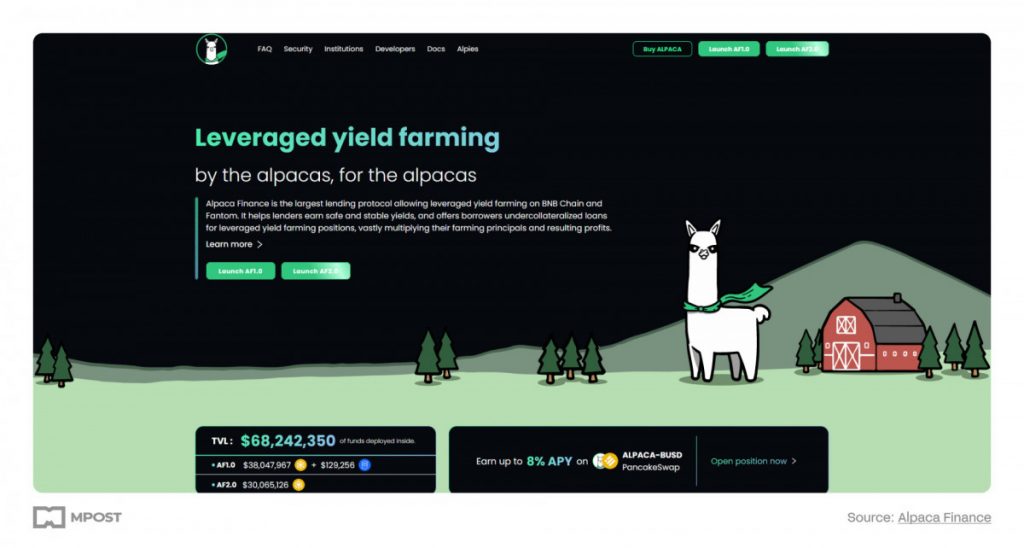
Metaverse Post New Report Opinion Top Lists The Horizon of Leveraged Yield Farming
Harnessing undercollateralized loans for yield farming has emerged as a remarkable method to enhance profits within the DeFi sector. Initially, such high-yield strategies were predominantly the domain of seasoned traders. Yet, with the advent of automated vaults and integrated liquidation protection mechanisms, they are becoming increasingly appealing to the average DeFi participant. Business , Markets Software Technology June 06, 2024
"The evolution from the first generation to the fifth generation occurred over just about a year. The rapid pace of advancement in yield farming and DeFi is astonishing. Moving forward, we can expect to see more products that emphasize higher leverage, expand across new blockchains, and innovate new strategies,\" stated.
By offering elevated returns to users via improved capital efficiency—rather than relying on governance tokens typical of most DeFi platforms—leveraged yield farming is poised to become a more sustainable option for income generation in DeFi.
, please be aware that the information shared on this page is not intended, and should not be construed, as legal, tax, investment, financial, or any other type of advice. It’s crucial to only invest what you can afford to risk and to seek out independent financial guidance should you have any uncertainties. For further insight, we recommend reviewing the terms and conditions along with the help and support sections maintained by the issuer or advertiser. MetaversePost is dedicated to providing accurate, impartial reporting, but market conditions can shift without prior notice. Share this article .
Anthony is a blockchain analyst and writer with a strong academic foundation in biochemistry. Currently, he serves as a researcher and content creator within the PowerPool protocol, focusing on updates about the ecosystem, new DeFi/dePin/AI products, and analyzing diverse web3 protocols.
article for precise information.
In Brief Liquidity Mining Explained Cryptocurrencylistings.com Launches CandyDrop to Streamline Crypto Acquisition and Boost User Engagement with Quality Projects


